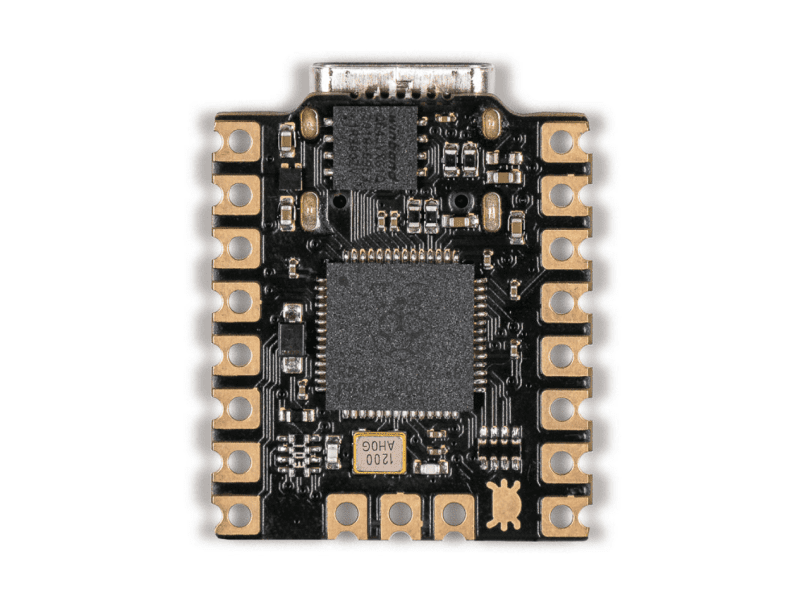You can flash it with the Pico firmware and program it with MicroPython, C/C++, or CircuitPython. So it’s very versatile and easy to get started with.
To achieve a smaller footprint, a few compromises have been made. Most notably, the Tiny 2040 only has a total of 16 pins versus Pico’s 40, plus a debug header. Of these, there are 12 GPIO pins, compared to 26 on Pico. So it won’t be compatible with most Pico add-on modules. As with Pico, there’s no wireless connectivity.
On the plus side, the Tiny 2040 does break out a fourth ADC input – which is connected to an on-board temperature sensor on Pico.
Tiny choices
You can buy the Tiny 2040 with or without (2.54 mm pitch) header pins attached. There’s also a choice between 2MB of on-board QSPI flash storage (as on Pico) or 8MB. The Tiny 2040 is a fair bit pricier than Pico itself, which is only £3.60 / $4.
On the plus side, the Tiny 2040 adds a very welcome on-board reset button, which saves repeatedly unplugging and reconnecting the board. There’s also a programmable RGB LED (linked to three internal GPIO channels), rather than the single-colour green one on Pico.
Other than that, its advantages are mainly down to its diminutive size, making it suitable for wearable projects or even a tiny robot. While not quite as minuscule as a Nionics Atto or Seeeduino XIAO, its RP2040 chip is a lot more powerful.
Verdict
8/10
Perfect for wearables and other portable projects, it packs the same RP2040 SoC as Pico but on a much smaller board, plus a few bonus features.
SPECS
Connectors:
16 × pins including 12 × GPIO, 3-pin debug header, USB-C port
RAM / Storage:
264kB SRAM, 2MB or 8MB QSPI flash
Features:
Reset and boot select buttons, RGB LED, 4 × 12-bit ADC channels, PIO, I2C, SPI, UART
Dimensions:
22.9 × 18.2 × 6 mm



